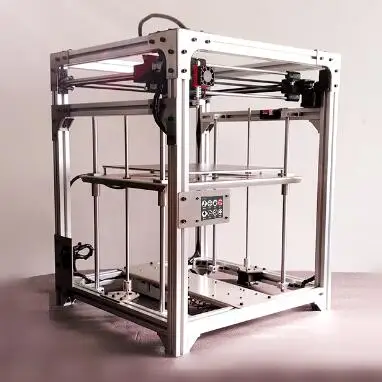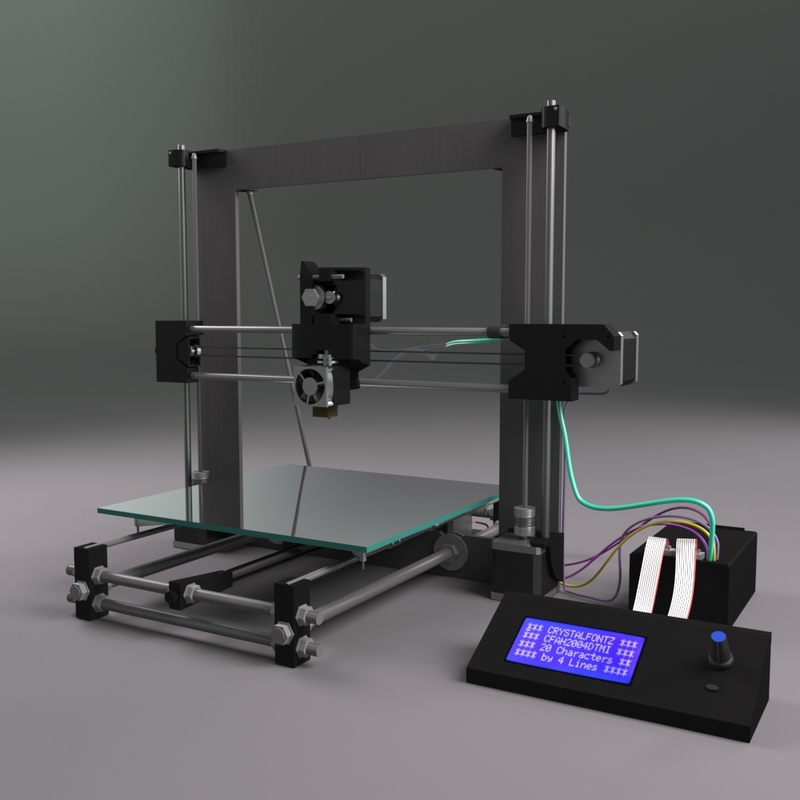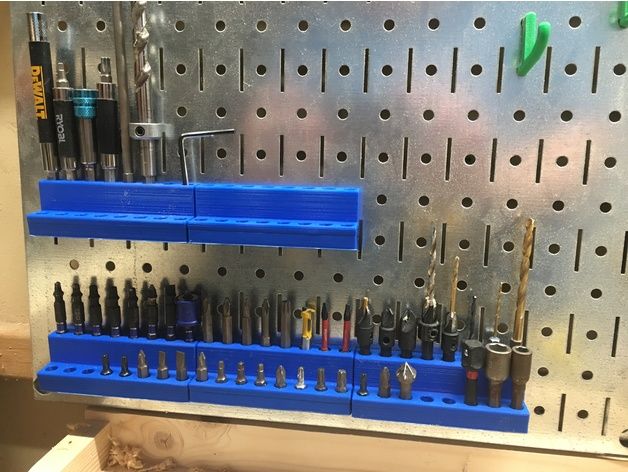Large corexy 3d printer
7 Best CoreXY 3D Printers (2022 Updated)
- Last Updated: December 8, 2022
- Pat Nathaniel
CoreXY printers are some of the most reliable and versatile on the market, making them ideal for both hobbyists and artisans.
Unlike other 3D printer design styles, such as the delta 3D printer, CoreXY printer heads only move on the X and Y axis (hence the name).
Why is that a benefit?
Because they are more agile and faster than the competition. Since the head doesn’t have to move on the Z-axis, it can provide much more detail within your builds.
In this article, we’ve compiled a list of the best 7 CoreXY 3D printers.
Let’s get started!
Tronxy X5SA Pro
Build volume: 330 x 330 x 400 mm
Check Latest Price
Creality Ender 6
Build volume: 250 x 250 x 400 mm
Get Discount (Official)
Check Latest Price
Vivedino Troodon CoreXY
Build volume: 300 x 300 x 400 mm
Check Latest Price
Table of Contents
- 7 Best CoreXY 3D Printers At A Glance
- 1.
Tronxy X5SA Pro (Best Value)
- 2. Creality Ender 6 (Best Choice)
- 3. Vivedino Troodon CoreXY (Premium Choice)
- 4. Two Trees Sapphire Pro (Best Budget)
- 5. Voron 2.4 R2 CoreXY (Best DIY)
- 6. Rat Rig V-Core 3.1
- 7. SecKit SK-Go³ (Best for Experienced Users)
- 1.
- CoreXY 3D Printer Buyer’s Guide
- What are CoreXY 3D Printers?
- Advantages of CoreXY 3D Printers
- Disadvantages of CoreXY 3D Printers
- FAQs
- Do These Printers Provide High-Quality Prints?
- Are These Printers More Expensive Than Other Models or Brands?
- Is Assembling a CoreXY Printer Difficult?
- Are These Printers Easy to Use?
- Final Verdict
7 Best CoreXY 3D Printers At A Glance
1. Tronxy X5SA Pro (Best Value)
2. Creality Ender 6 (Best Choice)
3. Vivedino Troodon CoreXY (Premium Choice)
4. Two Trees Sapphire Pro (Best Budget)
5. Voron 2.4 R2 CoreXY (Best DIY)
Voron 2.4 R2 CoreXY (Best DIY)
6. Rat Rig V-Core 3.1
7. SecKit SK-Go³ (Best for Experienced Users)
1. Tronxy X5SA Pro (Best Value)
3D Printer Type: FDM | Layer Resolution: 0.1-0.4 mm | Materials: PLA, PLA+, TPU, ABS & PETG | Build Volume: 330 x 330 x 400 mm | Print Speed: 20-150 mm/s | Printer Size / Weight: 580 x 645 x 660 mm / 14 kg
The X5SA Pro is for you if you frequently print large projects and prefer a quiet machine.
Be warned however that the instructions it comes with aren’t the clearest so I recommend watching videos online to help assemble it. Because of this, I don’t recommend the X5SA Pro for beginners (unless you like to tinker and DIY).
I like that the printer is quite sturdy once built.
A few other features I like:
Large Enclosure
This CoreXY 3D printer has one of the biggest platforms on the market, with a 330 by 330 by 400 mm printing surface.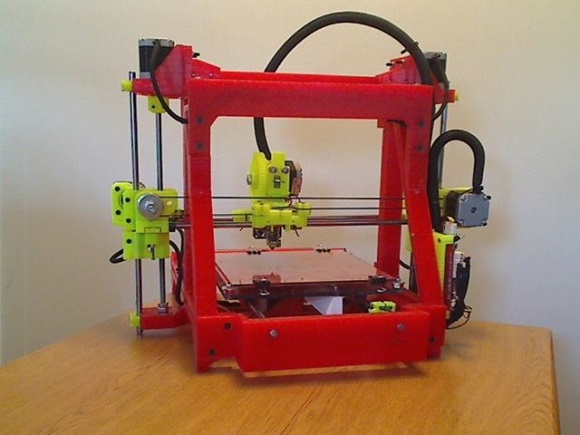 You can let your creativity shine with larger pieces such as printing cosplay armor.
You can let your creativity shine with larger pieces such as printing cosplay armor.
Automatic Leveling
If you have to use multiple color filaments to build your piece, leveling can be a challenge. With the automatic leveling function, you can keep going without any noticeable errors in your design. This printer also supports manual leveling when applicable.
Titan Extruder
The ‘Pro’ version of the X5SA comes with a Titan extruder which means you can print flexible filament like TPU. And switch to PETG or ABS with ease. The versatility of printing different materials is a huge pro.
Overall, this is a decent CoreXY 3D printer with a few drawbacks. Keep in mind that to get the best out of it modifications may be needed. While these aren’t usually too expensive, it will raise the cost.
If you want a 3D printer that doesn’t need to be upgraded then check out the next two reviews below.
- Large printing area
- Automatic leveling
- Power sensor
- Filament sensor
- Lifetime tech support
- Silent operation
- Some build instructions can be confusing
- Can take a while to master the leveling feature
Check 3DPrintersOnlineStore
Check Latest Price
2.
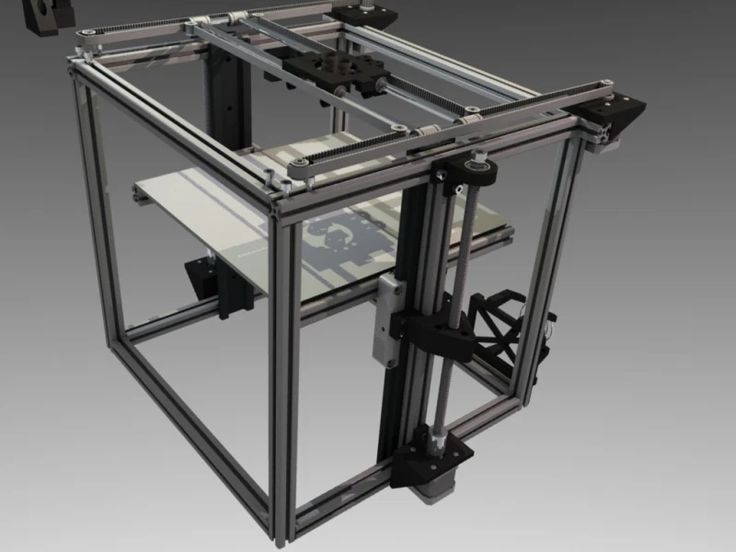 Creality Ender 6 (Best Choice)
Creality Ender 6 (Best Choice) 3D Printer Type: FDM | Layer Resolution: 0.1 mm | Materials: PLA | Build Volume: 250 x 250 x 400 mm | Printer Size / Weight: 495 x 495 x 650 mm / 30 kg
If you want a 3D printer that’s more beginner-friendly, than I recommend the Ender 6. This is Creality’s first foray into the world of CoreXY and they did a great job with this entry-level unit.
Assembling the Ender 6 was a breeze – it took us only one hour. And what we enjoyed the most was that the test prints came out beautifully.
A few other things we liked:
Large Housing Unit
Although the Ender 6 isn’t as big as the X5SA Pro, it is larger than most other printers. It has a 250 by 250 by 400 mm enclosure, which is almost as big as their CR-10 models. However, with such a relatively massive chamber, you need to make sure that you have enough counter space to house it.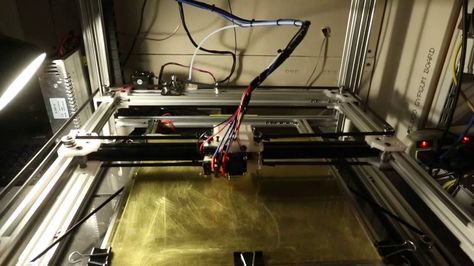
Fast Printing Speeds
Since the Ender 6 uses a CoreXY structure, it can achieve printing speeds of up to 150 mm per second. With an excellent cooling function and smooth FDM head, you can get more precision and better results in less time.
If you want a well-designed, easy to operate machine from one of the most well-known and respected companies the Ender 6 is for you.
- Rugged construction
- Large printing area
- Fast printing speeds
- Touchscreen interface
- Rapid cooling
- Hassle-free assembly
- Suffers from fan noise common to Creality printers
- Colored panels can make it harder to see your products during printing
Get Discount Now (Official Store)
Check Latest Price
3.
 Vivedino Troodon CoreXY (Premium Choice)
Vivedino Troodon CoreXY (Premium Choice) 3D Printer Type: FDM | Layer Resolution: 0.05-0.3 mm | Materials: ABS, PLA | Build Volume: 300 x 300 x 400 mm | Printer Size / Weight: 516 x 643 x 764 mm / 38 kg
If you’re ready to upgrade your 3D printing to the next level, the Troodon is for you. This is one of the largest (and priciest) models on the market, but it is better for advanced printing options.
Why do I like the Troodon?
Extra Large Printing Area
With a 300 by 300 by 400 mm enclosure (like the X5SA Pro), you have the option to print much larger. Even better, the Troodon works faster than them, too, all without sacrificing precision or build quality.
HEPA Air Filter
One of the primary advantages of buying an enclosed 3D printer is that it can trap potentially harmful fumes. This model goes a step further by scrubbing the air clean so you can work more efficiently, particularly when building multiple models in sequence.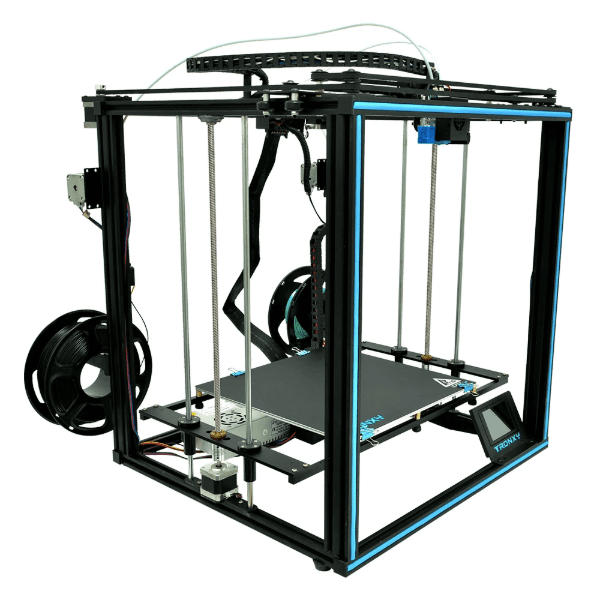
Pre-Built Machine
Rather than having to build this 3D printer yourself, it comes fully assembled. This is part of the reason why the price tag is higher, but it allows everyone to get involved, not just those with engineering skills.
The Vivedino Troodon is one of the more beginner friendly CoreXY printers and is perfect if you want to get high-quality prints from the get-go.
- Pre-assembled housing
- Large design for bigger models
- Rapid printing and cooling
- A HEPA filter traps harmful emissions
- Automatic pause and power sensor
- Quiet operation
- More expensive than other 3D printers
Check 3DPrintersOnlineStore
Check Latest Price
4.
 Two Trees Sapphire Pro (Best Budget)
Two Trees Sapphire Pro (Best Budget) 3D Printer Type: FDM | Layer Resolution: 0.1 mm | Materials: PLA, ABS, TPU, Flexible, Wood, PVA, HIPS | Build Volume: 225 x 235 x 235 mm | Printer Size / Weight: 405 x 360 x 480 mm / 14 kg
When comparing different 3D printers, you’ll notice that many of them can be quite costly. If you’re hoping to save some money while getting the most value, the Two Trees Sapphire Pro is an excellent choice.
Why is this the best budget pick?
Print Different Materials
The Sapphire Pro can do things machines priced higher can’t. Chief among them is print in TPU and flexible filament.
Rapid Cooling
Because these printers use the FDM method of printing, distortion can be possible if the filament doesn’t cool down in time. Thankfully, the Sapphire Pro alleviates that problem so that your finished products will look smoother, uniform and be more durable.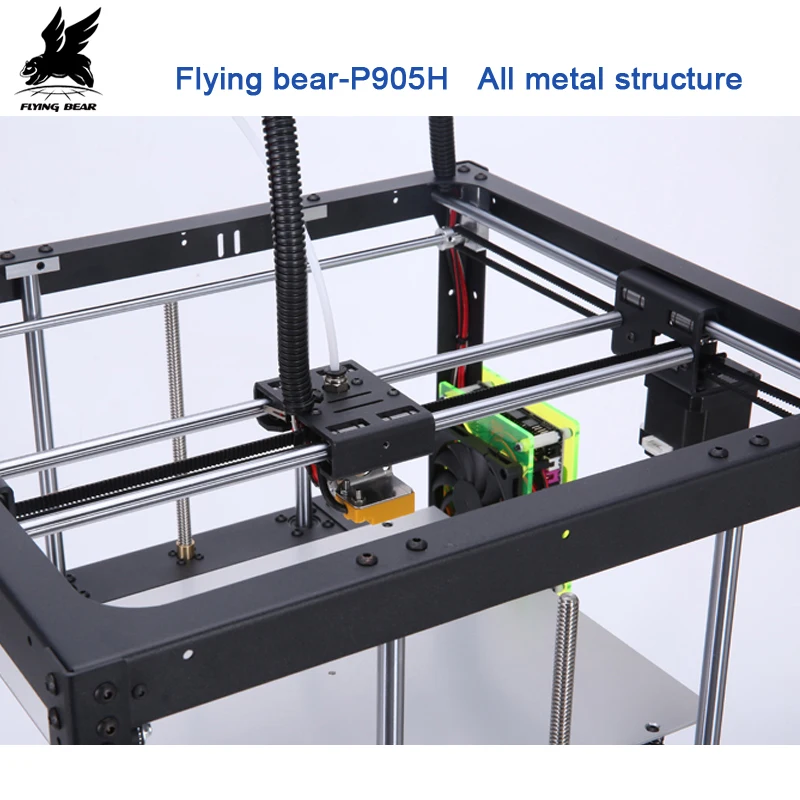
Automatic Pause
Just as you wouldn’t want to dry-fire a gun, running your 3D printer without filament can damage the internal components. The Sapphire Pro has built-in sensors that shut the machine down as soon as the material runs out. This feature is also helpful if there are any blockages or errors while printing.
Another advantage of pausing is that you don’t lose your place while printing. Once you get more filament into the machine, it will resume where it left off, so there won’t be any issues with the results.
If you want to experiment with CoreXY design and not shell out a ton of cash then the Sapphire Pro is for you.
- Quieter with TMC2208 stepper motor
- Lighter and more agile printing method
- Large 3.5-inch touchscreen
- Easier to build than other models
- Rapid cooling for smoother, more uniform products
- Automatic pause when filament runs out
- Not designed for commercial purposes
- Some components can overheat, causing damage to the machine
Check Banggood Price
Check Latest Price
5.
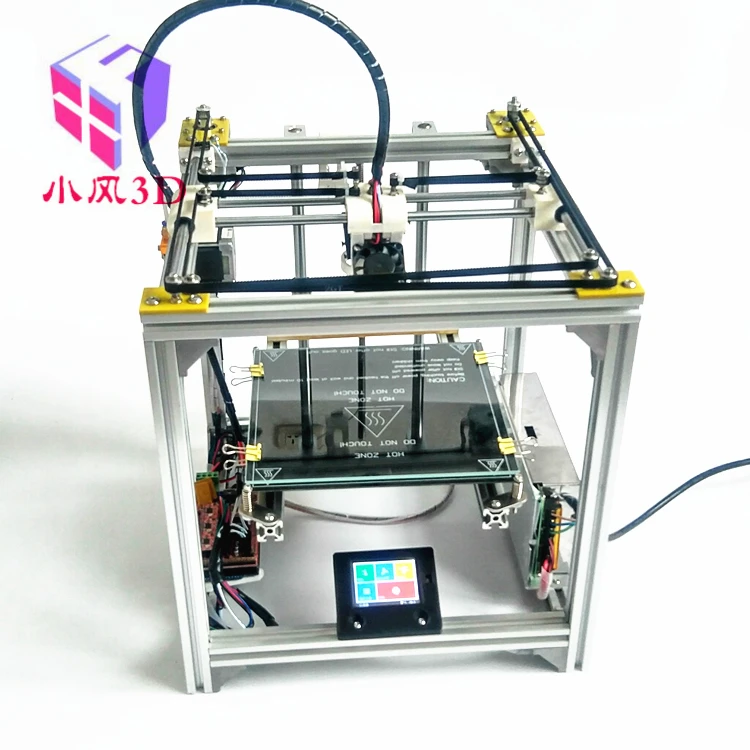 Voron 2.4 R2 CoreXY (Best DIY)
Voron 2.4 R2 CoreXY (Best DIY) 3D Printer Type: FDM | Layer Resolution: 0.025 mm | Materials: PLA, ABS, PETG, etc. | Build Volume: 250 x 250 x 250 mm, 300 x 300 x 300 & 350 x 350 x 350 mm
Like the X5SA, the Voron 2.4 R2 CoreXY is for those who have a DIY-can-do attitude and want the ultimate 3D printing machine.
Be warned, however, that you will have to build your model from scratch. Because of this process, you will spend more on this machine than you would with most others on this list.
Why do I like the Voron?
No Vibrations
One of the issues with CoreXY printers is that the arm moves on the Z-axis. As a result, it can shake and rattle the machine, leading to errors during printing. Because the Voron moves the head on all three axes, that is not an issue.
Durable Components
Voron’s mission statement is to create a 3D printer that doesn’t need constant tweaking or upgrading.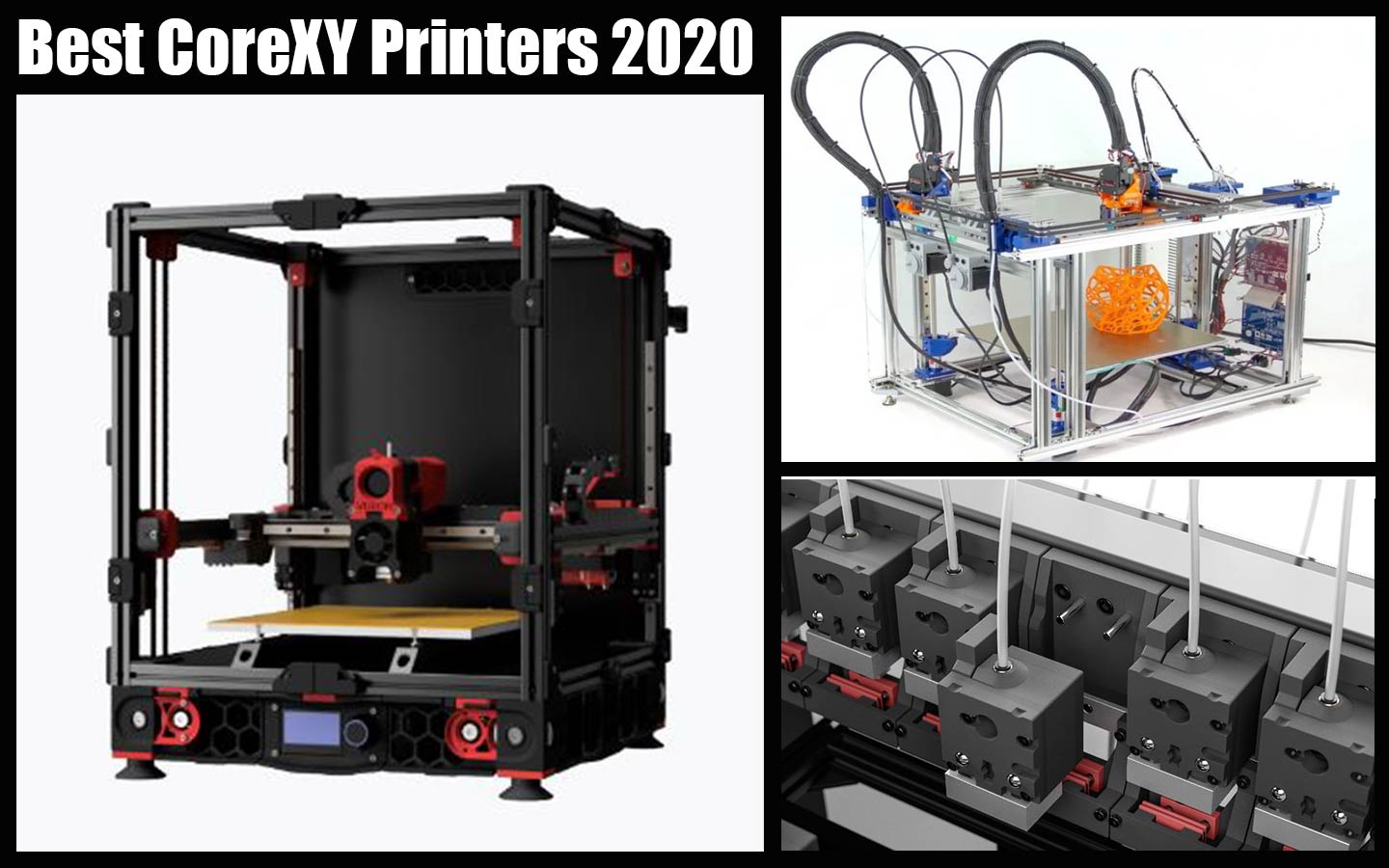 Buying and assembling these parts means that you will have a printer built to last.
Buying and assembling these parts means that you will have a printer built to last.
HEPA Filter
As we’ve mentioned, 3D printers can emit semi-toxic fumes. To alleviate this potential hazard, the Voron comes with a HEPA filtration system.
- High-quality parts
- Low noise and vibration
- Customizable build
- Vibrant online support community
- Large print area
- On the expensive-side ~$1200 to build
- Requires expertise to build
Check Latest Price
6.
 Rat Rig V-Core 3.1
Rat Rig V-Core 3.1 3D Printer Type: FDM | Materials: PLA, ABS & PETG | Build Volume: 200 x 200 x 200, 300 x 300 x 300, 400 x 400 x 400 & 500 x 500 x 500 mm
Those who want to pick and choose what goes into their 3D printer must meet Rat Rig V-Core 3.1. This open-source printer offers the user a fantastic variety of customization, from frame size and print volume to various EVA 3-compatible print heads, controller boards, enclosures, and more.
The print volume ranges from 300 x 300 x 300 mm to 500 x 500 x 500 mm — making V-Core 3.1 the largest printer on this list. The aluminum frame is sturdy and V-Core 3.1 is built like a tank.
Some users experienced reliability issues with certain components on the previous V-Core 3 version, particularly the idlers, but Rat Rig has replaced most of them with new ones. The upgraded machine should let you simply print without worrying about maintenance.
But what if you don’t want to build your own machine? That’s fine — Rat Rig offers packaged options of the V-Core 3.1. Simply pick the build volume you want and you’ll get the same package Rat Rig itself uses at its print farm.
To wrap it all up, Rat Rig V-Core 3.1 is a premium printer and a dream machine for those who want to customize their machine precisely to their needs.
- Amazing variety of customization options
- Large build volume (depending on the frame)
- Active online community
- Good print quality
- Needs a Raspberry Pi, not included in the set
- Customizations can rack up the price
- Not very beginner-friendly
Check Latest Price
7.
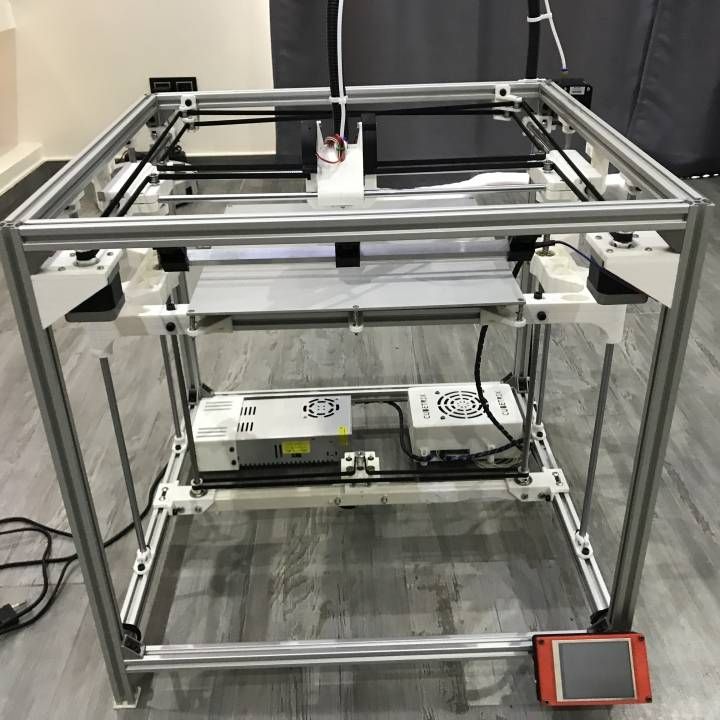 SecKit SK-Go³ (Best for Experienced Users)
SecKit SK-Go³ (Best for Experienced Users) 3D Printer Type: FDM | Materials: PLA, ABS, PETG & TPU | Build Volume: 310 x 310 x 350 mm
SecKit SK-Go³ probably shouldn’t be your first printer — even the brand’s name stands for “second kit.” But it’s a fantastic machine to move on to once you’ve learned the ropes of 3D printing.
SK-Go³ has a decent print volume of 310 x 310 x 350mm. It won’t print the largest parts, but the size is adequate. The print bed is also supported by a rigid, sturdy all-metal frame, which gives the machine welcome longevity.
Where SK-Go³ truly shines is in print quality. It prints excellently detailed parts with little to no warping, stringing, or other quality issues. You can get the same high quality with almost any material — if you run into issues, it’ll likely be because of the material’s limitations.
Despite what you might expect, SK-Go³ is surprisingly affordable, particularly when you consider the printing quality.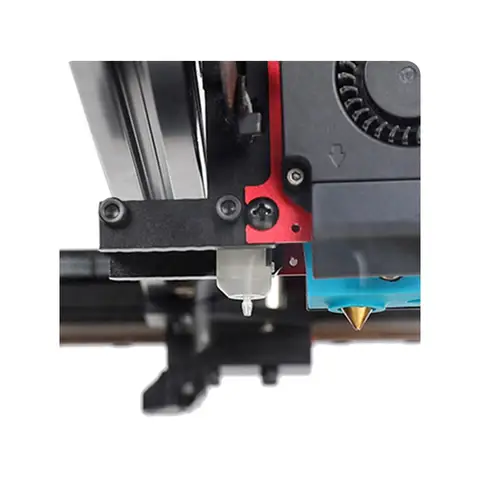 The final price varies somewhat based on the parts you choose, as the manufacturer offers some customization options (mostly a choice between a basic and premium component).
The final price varies somewhat based on the parts you choose, as the manufacturer offers some customization options (mostly a choice between a basic and premium component).
SecKit SK-Go³ brings to the table fantastic print quality and versatility, making it a perfect choice for your second 3D printer.
- Excellent print quality with practically any material
- Good value for the quality
- Small but happy community that the manufacturer actively talks to
- Decent customizability
- Very noisy
- Not for beginners
Check Latest Price
CoreXY 3D Printer Buyer’s Guide
Now that we’ve seen some of the best 3D printer models available, let’s dive into the primary features of a CoreXY machine.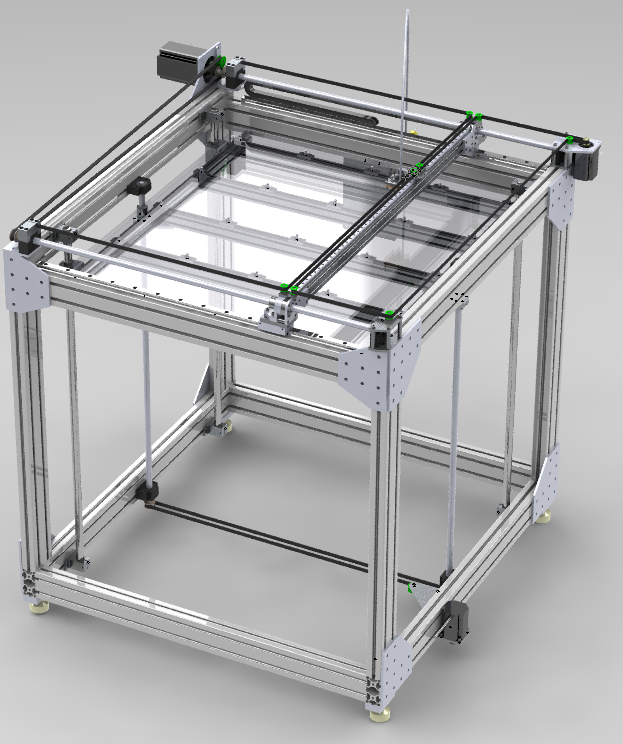 Before making a final decision, here is what you need to know.
Before making a final decision, here is what you need to know.
What are CoreXY 3D Printers?
Source: Youtube Thomas SanladererThe name for these printers stems from the fact that the head only moves on the X and Y axes. To create a 3D structure, the base moves along the Z-axis. This design offers some significant benefits, namely speed, and precision.
These machines typically have a square enclosure to allow freedom of movement, and the base has to be able to move freely up and down. Higher-end models will have glass sides to trap fumes and act as a safety barrier.
Another hallmark of a CoreXY printer is that it uses the FDM printing method, which utilizes thermoplastic filament to create structures. Other techniques include stereolithography (SLA), digital light processing (DLP), and selective laser sintering (SLS). Overall, FDM is relatively easy to master and can deliver durable products quickly and reliably.
Source: Youtube David AldrichAdvantages of CoreXY 3D Printers
Here are some primary reasons to purchase a CoreXY 3D printer:
- Speed – Because the printing head doesn’t move in all three axes, it can print faster and smoother than other models.
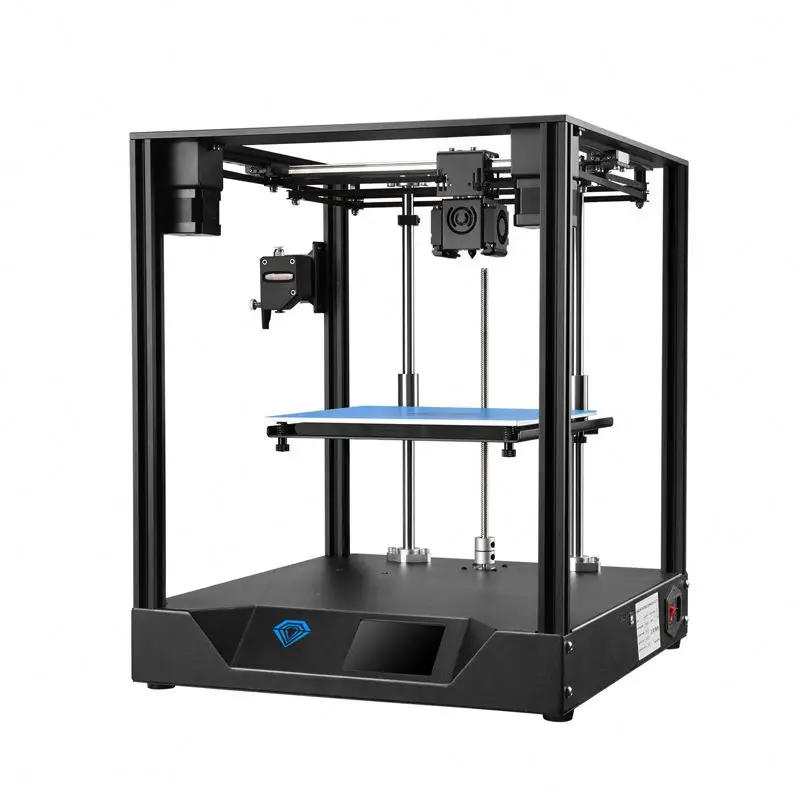
- Longevity – Another benefit of moving on two axes is that the machine requires fewer parts. These printers are relatively low-maintenance.
- Cost – While you have to pay for more filament, these machines’ upfront costs are far lower than other high-end models.
- Small, Precision Printing – If you aren’t trying to build large objects, CoreXY printers are ideal for smaller pieces. You can also scale down your designs to get more precise details.
Disadvantages of CoreXY 3D Printers
Here are some potential reasons to avoid CoreXY printers.
- Belt Maintenance – Although these machines have fewer parts, the ones they do require care and upkeep. If the belts aren’t aligned correctly, they can yield disastrous results.
- Vibrations – Since the pad moves, it can cause the machine to wobble and vibrate slightly. When this happens, you can spot small imperfections in your finished pieces.
- Complex Setup – You can buy pre-assembled CoreXY printers, but they tend to be more expensive.
 Building one of these machines requires some know-how, so beginners may not like the process.
Building one of these machines requires some know-how, so beginners may not like the process.
Do These Printers Provide High-Quality Prints?
Although these machines don’t provide as much precision as other models, they can deliver excellent results.
Are These Printers More Expensive Than Other Models or Brands?
On average, CoreXY printers will be in the middle of the pack, but some units are much more affordable.
Is Assembling a CoreXY Printer Difficult?
These printers are harder to assemble than others, such as Cartesian printers. Part of the challenge is getting the belts in the right position.
Are These Printers Easy to Use?
Yes, once they are assembled, you can utilize the touchscreen to create vibrant finished pieces. However, some specific models can be tricky to master, particularly when it comes to leveling.
Final Verdict
We’ve shown many high-quality CoreXY 3D printers on this list, but our top two are the X5SA Pro and the Voron 2.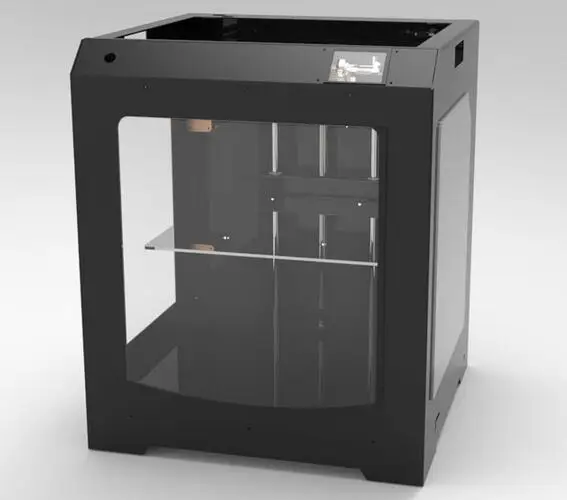 4 R2. If you want something easy to use and reliable, the X5SA is an excellent choice. It has a substantial build surface, so you can create larger masterpieces than you would be able to on other models. We also like that it has durable parts that will last for a long time.
4 R2. If you want something easy to use and reliable, the X5SA is an excellent choice. It has a substantial build surface, so you can create larger masterpieces than you would be able to on other models. We also like that it has durable parts that will last for a long time.
If this isn’t your first rodeo and you’re more serious about 3D printing, the Voron is unmatched. While it is far pricier than the X5SA, you get what you pay for. We like the customization options of the Voron, as well as the ruggedness of the build.
Related Articles:
- Best 3D Printer for Multiple Colors
- Best 3D Printer for Resin
- Best 3D Printer for Wax
The 9 Best CoreXY 3D Printers (Including Kits) in 2023 – Clever Creations
Nowadays, you can find 3D printers in all shapes and sizes. The most common one that you can see is probably the Cartesian style 3D printers like the Ender 3 and the Prusa i3 MK3S+. But one more recent and arguably superior style is the CoreXY 3D printer arrangement.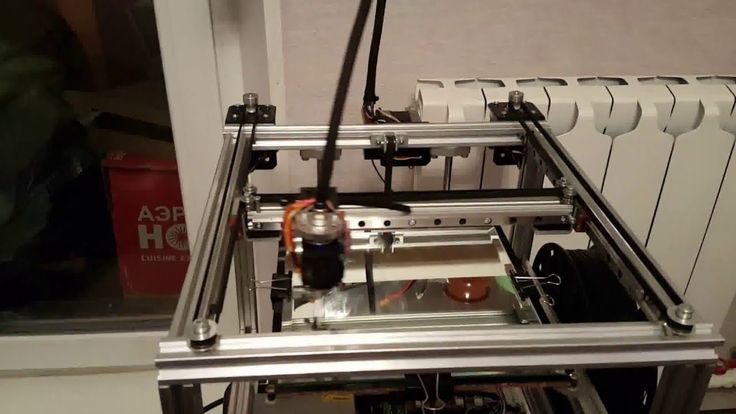
CoreXY 3D printers are increasing in popularity amongst hobbyists and professionals due to their rigid cube-shaped design and high printing speeds. The CoreXY setup has less moving parts than a Cartesian printer, and offers better print quality.
A popular 3D printer in this style is the Voron 2.4. It has a solid structure, is widely configurable, and delivers excellent print quality at high speeds, all while remaining relatively affordable. For these main reasons, it came out on top of this list of the best CoreXY 3D printers.
In this article, we will go over the full list and explain what you need to look out for when buying a CoreXY machine. So without further ado, let’s get started and figure out which is the best CoreXY printer for your needs.
| CoreXY 3D Printer | Summary | Build Volume(s) | Price (~) | Best Offer |
|---|---|---|---|---|
| Voron 2.4 | Best overall | 250 x 250 x 250 mm 300 x 300 x 300 mm 350 x 350 x 350 mm | $879-$1059 | AliExpress |
| TRONXY X5SA | Best on a budget | 330 x 330 x 400 mm | $359 | AliExpress |
| Vivedino Troodon | Best high-end | 300 x 300 x 400 mm 400 x 400 x 500 mm | $1674-$2144 | AliExpress |
| Rat Rig V-Core 3 | Most configurable CoreXY kit | 300 x 300 x 300 mm 400 x 400 x 400 mm 500 x 500 x 500 mm | $560-$2000 | RatRig |
| Creality Ender 6 | Best Creality CoreXY | 250 x 250 x 400 mm | $550 | Creality3D |
Voron 0. 1 1 | Smallest CoreXY | 120 x 120 x 120 mm | $453 | AliExpress |
| Creality CR-30 | Best infinite Z-axis | 200 x 170 x ∞ mm | $1099 | Creality3D |
| Creativity 3D Elf | Best dual Z-axis | 300 x 300 x 350 mm | $399 | AliExpress |
| E3D ToolChanger | Most versatile | 200 x 300 x 300 mm | $2200 | E3D |
What is a CoreXY 3D printer?
The CoreXY style started as an MIT project by Ilan Moyer in 2011. The project’s original aim was to negate the side-effects of traditional cartesian motion systems by eliminating the serially stacked axes (one motor pushing the mass of another).
In a CoreXY printer, two stepper motors are stationary. It uses a clever belt system to move the print head in both the X and Y directions. The stationary motors result in less moving mass, which in turn means that higher print speeds and accelerations can be achieved without sacrificing too much print quality.
Core XY Advantages and Disadvantages
In a Cartesian style 3D printer, each stepper motor moves independently of the other. While it leads to a more straightforward design, the disadvantage is that the Y-axes motor has to move the heavy print bed back and forth. The Z-axis, too, has to lift the mass of the X-axis beam, the hot end, and the X-axis stepper motor, limiting the printing speeds and printer size.
In a CoreXY system, the XY stepper motors work in tandem to move the hotend. There are no moving stepper motors, and the load of the hot end beams is divided equally amongst the two stepper motors. It leads to a lighter hot end design, faster printing speeds, higher print accuracy, a solid printer frame, and a compact form factor.
The disadvantages, however, are that a CoreXY 3D printer uses a complicated belt and pulley arrangement. You need to make sure that the belts are aligned perfectly and are parallel to each other. The longer belt length also mandates that the belts are properly tensioned and aligned. If not, it will lead to dimensional inaccuracies in your 3D prints.
If not, it will lead to dimensional inaccuracies in your 3D prints.
All of this means that while CoreXY 3D printers can be superior to Cartesian variants, they do require a bit more tinkering and setup time to get them running perfectly. Going with a reliable and qualitative option is therefore the best thing you can do to save yourself time and effort.
Now, let’s look at which CoreXY 3D printers deserve your money.
The Best CoreXY 3D printers in 2023
Voron 2.4
Best overall
Check Price
AliExpressMatterHackers
The Voron 2.4 is a DIY CoreXY 3D printer that came to be due to the Voron project initiated in 2015. The Voron 2.4 is one of the five 3D printers under the Voron initiative and is the most popular and versatile at the moment.
Like all Voron 3D printers, the Voron 2.4 comes as a kit, and you can choose from three different build volumes for your build. The kit comes with a PEI magnetic build plate for easy print removal, Moons’ stepper motors for high reliability, all-metal titanium alloy print head with a direct drive extruder to let you print with a wide variety of materials.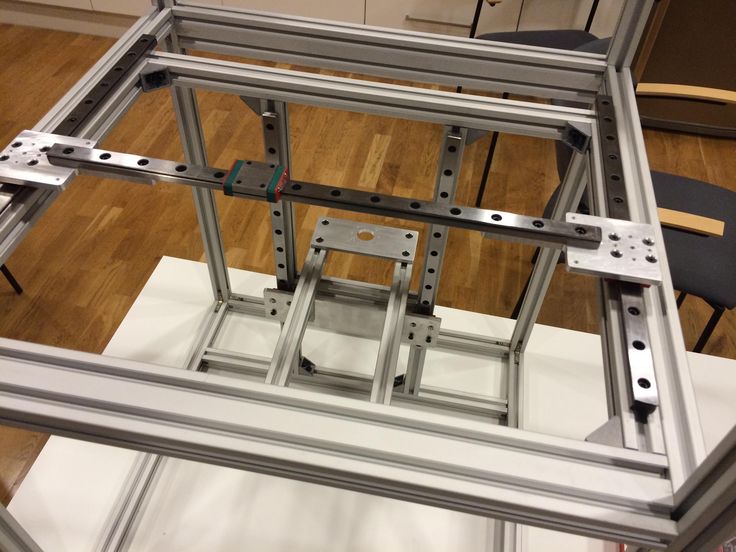
A unique aspect of the 2.4 is its all-belt system, even on the Z-axis, which makes for a more straightforward bed leveling process. The motion of these axes themselves is stabilized with the help of stainless steel linear rails for smooth and precise movement.
The Voron 2.4 3D printer kit gives you ample opportunities to build your 3D printer the way you like it. It is well-documented, has a strong and active community, is fully open source, and provides impressive features considering the price point, making it one of the overall best CoreXY 3D printers. If you like DIY stuff (i.e. building your own 3D printer) and want a robust printer with great print quality, it is the perfect fit for you.
Standout Features
- All metal titanium alloy hotend
- Scalable build volume
- Open-source design
Technical Details | |
|---|---|
| Build volumes | 250 x 250 x 250 mm 300 x 300 x 300 mm 350 x 350 x 350 mm |
| Feeder system | Direct Drive or Bowden |
| Frame | Aluminum, 3D printed parts |
Max. hot end temperature hot end temperature | 300°C |
| Bed leveling | Automatic |
| Materials | ABS, PLA, TPU, nylon, carbon fiber, PVC, HIPS |
What We Like
- Wide material compatibility
- Excellent community support
- Automatic bed leveling
Could Be Better
- Requires assembly
- Complicated Z-axis system
Find Voron 2.4 at
AliExpressMatterHackers
TRONXY X5SA
Best on a budget
Check Price
AmazonAliExpress
Like the Voron 2.4, the Tronxy X5SA comes as a 3D printer kit. It boasts an impressive build volume of 330 x 330 x 400 mm for just under $350.00 and is an excellent value for money option in this price range.
The Tronxy X5SA comes with a Bowden style extruder setup for printing at faster speeds and fully benefiting the CoreXY design. It offers filament run-out detection, a resume print function, an auto-bed leveling system, includes a coated glass bed, and has a 3. 5-inch touchscreen for user convenience during the 3D printing process.
5-inch touchscreen for user convenience during the 3D printing process.
Overall, the Tronxy X5SA is one of the best CoreXY 3D printers if you want a significant build volume on a budget and want to get your hands dirty building your own machine. It offers excellent features and decent print quality and will fit hobbyist 3D printers as well as a school environment.
Standout Features
- Filament run-out detection
- Touchscreen
- Auto-bed leveling
Technical Details | |
|---|---|
| Build volume | 330 x 330 x 400 mm |
| Feeder system | Bowden |
| Frame | Aluminum, sheet metal |
| Max. hot end temperature | 275°C |
| Bed leveling: | Auto |
| Materials | ABS, PLA, TPU, nylon, carbon fiber, PVC, HIPS |
What We Like
- Cheap and affordable
- Decent build quality
- Fast printing
Could Be Better
- Plastic extruder
- Assembly is tricky for beginners
Find TRONXY X5SA at
AmazonAliExpress
Vivedino Troodon
Best high-end
Check Price
AliExpress
The Vivedino Troodon is a premium CoreXY 3D printer that comes with the highest specifications and offers top-of-the-line features for the best 3D printing experience.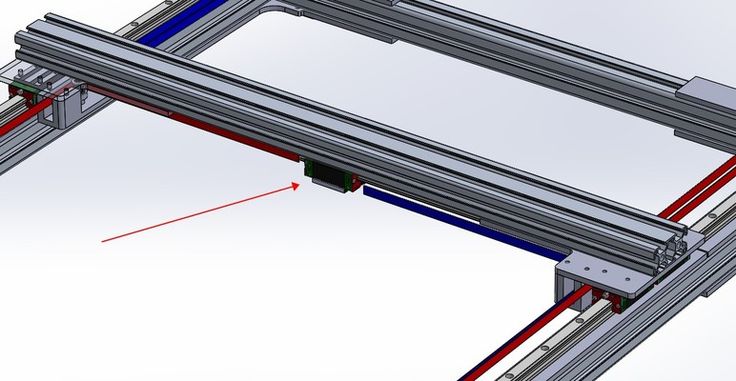 Unlike the previous two CoreXY printers, the Troodon comes fully assembled. In terms of configurability, you can choose from two different build volumes.
Unlike the previous two CoreXY printers, the Troodon comes fully assembled. In terms of configurability, you can choose from two different build volumes.
The spec sheet is relatively similar to the Voron 2.4. Just like it, the Troodon comes with a direct drive extruder, a magnetic PEI flexible build plate, and an all belt-driven motion system with precision linear rails. Additionally, you get a 32-bit motherboard with a TMC2660 stepper driver, an automatic bed leveling probe, and a built-in HEPA filter to filter out 3D printer fumes.
The Vivedino Troodon is fully packed with features and offers everything you would expect from a premium 3D printer. At its price point, it is not for beginners and amateurs in 3D printing; however, considering it comes fully assembled, it will make an excellent choice for prosumers and professionals looking for a 3D printer that rapidly delivers high-quality prints.
Standout Features
- HEPA air filter
- 32 Bit controller with TMC2660 stepper drivers
- Wireless control via Wi-Fi module
Technical Details | |
|---|---|
| Build volumes | 300 x 300 x 400 mm 400 x 400 x 500 mm |
| Feeder system | Direct Drive |
| Frame | Aluminum, sheet metal |
Max.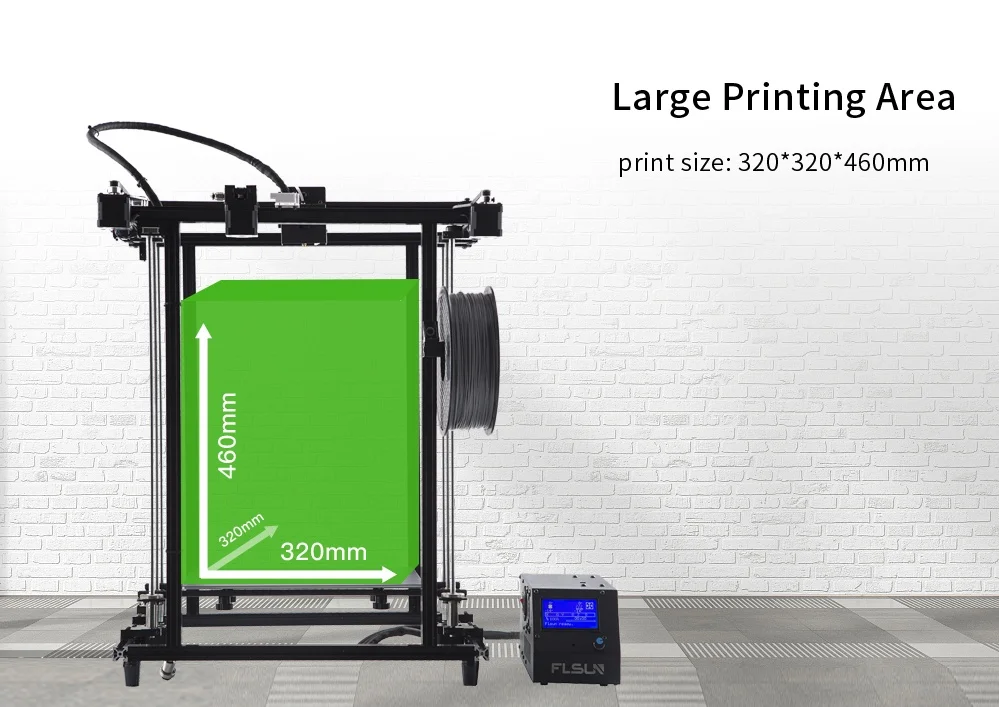 hot end temperature hot end temperature | 270°C |
| Bed leveling | Auto |
| Materials | PLA, ABS, PVA, HIPS, PETG, Nylon, Wood, PC, Carbon Fiber, etc. |
What We Like
- Uses premium components
- Excellent build and print quality
- Auto-bed leveling
Could Be Better
- 'Clone' Duet 2 Wifi Electronics
Find Vivedino Troodon at
AliExpress
Rat Rig V-Core 3
Most configurable CoreXY kit
Check Price
RatRig
The RatRig V-Core 3 is a premium DIY 3D printer kit aimed at advanced-level users who want to customize their 3D printing experience fully. Due to higher-end components, it boasts top-of-the-line features and high printing quality.
This CoreXY 3D printer is available in three different build volumes, with the most extensive configuration giving you a whopping 500 x 500 x 500 mm of print volume.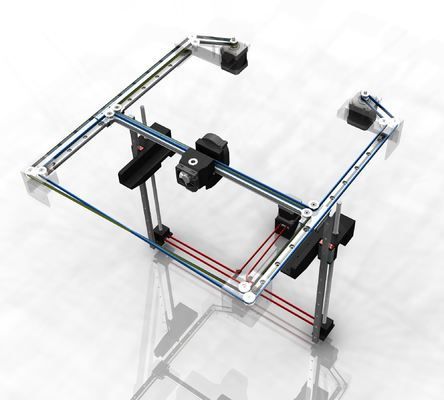 You get belt-driven X and Y axes and a unique 3-point kinematic bed leveling system on the Z-axis for a perfectly leveled print bed each time. MGN 12 precision linear rails fully support the motion system for smooth motion.
You get belt-driven X and Y axes and a unique 3-point kinematic bed leveling system on the Z-axis for a perfectly leveled print bed each time. MGN 12 precision linear rails fully support the motion system for smooth motion.
The RatRig V-Core 3 offers excellent value and gives you complete control over the design of your 3D printer by allowing you to choose the exact components and upgrades you need. There is good documentation available with many build videos. Similarly, its users provide good community support.
Altogether, the RatRig V-Core 3 is a great fit for professionals and seasoned 3D printer users who want to build a high-end machine with excellent features and do not mind paying a premium for it.
Standout Features
- Fully customizable kit
- 3 Point kinematic bed
- Quality MGN12 linear rails
Technical Details | |
|---|---|
| Build volumes | 300 x 300 x 300 mm 400 x 400 x 400 mm 500 x 500 x 500 mm |
| Feeder system | Direct Drive or Bowden |
| Frame | Aluminum and 3D printed parts |
Max. hot end temperature hot end temperature | 450°C (Mosquito Hotend) |
| Bed leveling | Auto or Manual |
| Materials | PLA, ABS, PVA, HIPS, PETG, Nylon, Wood, PC, Carbon Fiber, etc |
What We Like
- Can print advanced materials
- Easy to scale and configure
- High accuracy
Could Be Better
- Requires technical expertise
- Time-intensive build
Find Rat Rig V-Core 3 at
RatRig
Creality Ender 6
Best Creality CoreXY
Check Price
AmazonCreality3DComgrow
The Creality Ender series 3D printers deliver good-quality prints while providing excellent value for money and accessible to many users. The Creality Ender 6 is Creality’s attempt at a CoreXY 3D printer, and it combines the features of the Ender 3D printer’s design along with the benefits of the CoreXY design.
The Ender 6 is a fully enclosed 3D printer with a decent build volume of 250 x 250 x 400 mm.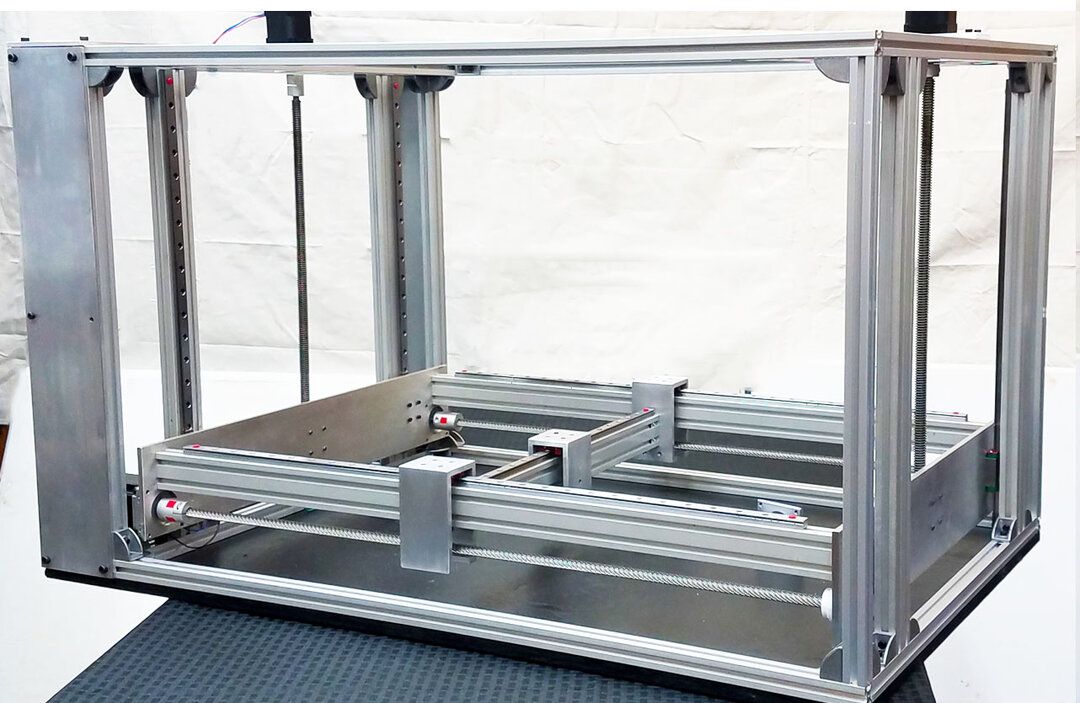 It comes with filament run-out detection, a resume printing function, and a touch screen with an updated UI for ease of use. The downside is the manual bed leveling, which is cumbersome considering the bed size and can lead to print failures. It is possible to upgrade it with a BLTouch leveling sensor, however, taking away the need for manual leveling.
It comes with filament run-out detection, a resume printing function, and a touch screen with an updated UI for ease of use. The downside is the manual bed leveling, which is cumbersome considering the bed size and can lead to print failures. It is possible to upgrade it with a BLTouch leveling sensor, however, taking away the need for manual leveling.
Overall, the Creality Ender 6 is a great overall package with all the basic features you need and gives a decent print quality. It is amongst the best CoreXY 3D printers for beginners and can be safely used in classrooms and home setups due to its fully-enclosed design.
Standout Features
- Ultra silent motherboard
- 4.3" HD Touch Screen
- Fully-enclosed design
Technical Details | |
|---|---|
| Build volume | 250 x 250 x 400 mm |
| Feeder system | Bowden |
| Frame | Aluminum and plastic |
Max.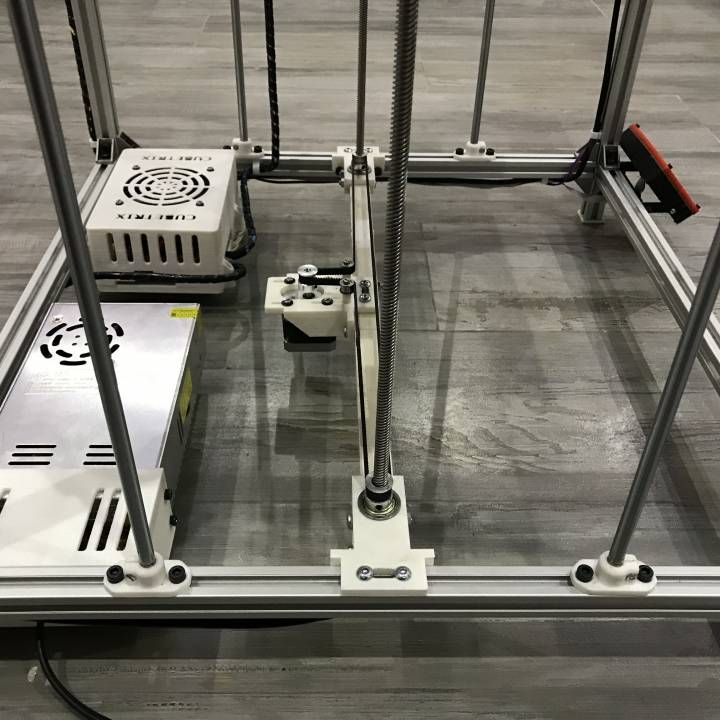 hot end temperature hot end temperature | 240°C |
| Bed leveling | Manual |
| Materials | PLA/TPU/ABS/PETG |
What We Like
- Easy to use
- Affordable
- Fully enclosed design
Could Be Better
- Manual bed leveling
- Print quality does not stand out
Find Creality Ender 6 at
AmazonCreality3DComgrow
Voron 0.1
Smallest CoreXY
Check Price
AliExpressMatterHackers
The best CoreXY 3D printers usually come with significant build volumes to take advantage of the high-printing speeds provided by the CoreXY style setup. However, the Voron 0.1 is an exception and caters to users who want the benefits of some of the best CoreXY 3D printers, albeit in a small and compact form factor.
The build volume is a meager 120 x 120 x 120 mm, which is only fit for printing smaller models. Nonetheless, you get an all-metal titanium print head for maximum material compatibility and an adjustable magnetic PEI print bed for easy print removal.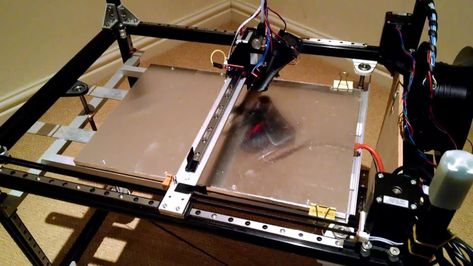 The X and Y axes are belt-driven, while the vertical Z-axis has a lead screw for the print bed’s movement.
The X and Y axes are belt-driven, while the vertical Z-axis has a lead screw for the print bed’s movement.
The Voron 0.1 is a feature-packed small 3D printer with high-end features meant for both prosumers and professionals in the industry. It can also be a great beginner’s 3D printer for trying out exotic print materials. And if you can get away with the small build volume, the Voron 0.1 is as good as any other premium FDM printers out there.
Standout Features
- Compact build
- High-quality enclosed panels
- Control via Raspberry Pi
Technical Details | |
|---|---|
| Build volume | 120 x 120 x 120 mm |
| Feeder system | Direct Drive |
| Frame | Aluminum and 3D printed parts |
| Max. hot end temperature | 300°C |
| Bed leveling | Manual |
| Materials | ABS, PLA, TPU, nylon, carbon fiber, PVC, HIPS |
What We Like
- Small footprint
- Wide material compatibility
- Genuine high-end components
Could Be Better
- High cost for its volume
- Only comes in kit form
Find Voron 0.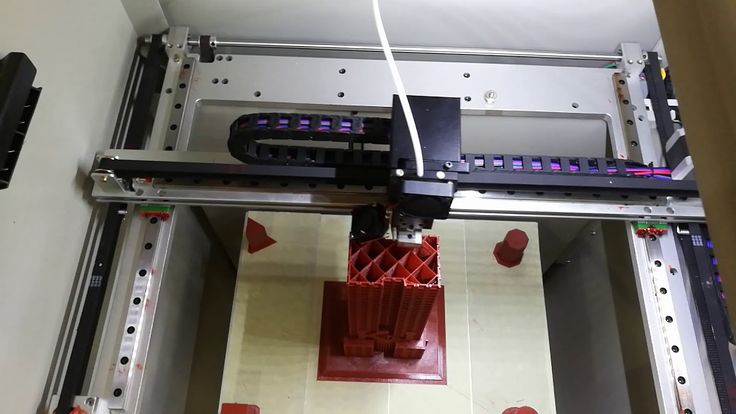 1 at
1 at
AliExpressMatterHackers
Creality CR-30
Best infinite Z-axis
Check Price
AmazonCreality3D
The Creality CR-30 is a unique 3D printer with a very different design. Instead of a traditional print bed on the Z-axis, it uses a conveyor belt. It builds on the concept of Karl Brown and Bill Steele’s 3DPrintMill 3D printer.
The CR-30’s continuously moving conveyor belt lets you print infinitely long objects on the Z-axis. Its Nylon print surface is excellent for bed adhesion, and the prints easily fall off the edge of the conveyor belt once their printing is complete.
This CoreXY printer’s XY plane is inclined at a 45° angle to the printing surface, which gives it a unique printing angle and offsets any drawbacks caused due to the typical vertical nozzle arrangement. You also get a dual-gear metal extruder and a filament detection system as additional features for extra reliability.
While the CR-30’s design stands out amongst this list of best CoreXY 3D printers, it is not the ideal 3D printer for a beginner.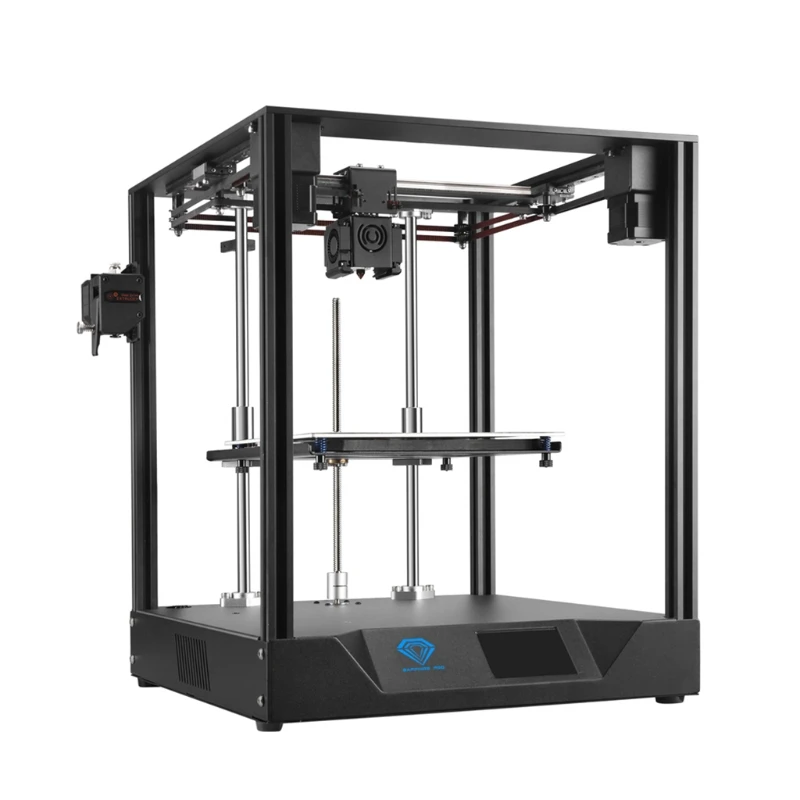 Nonetheless, if you print extremely large objects and need a printer specifically for these use cases, it is an excellent match for your 3D printing needs.
Nonetheless, if you print extremely large objects and need a printer specifically for these use cases, it is an excellent match for your 3D printing needs.
Recommended:
The 5 Best Belt 3D Printers for Infinite Printing
Standout Features
- Infinite Z-axis design
- Silent 3D printing
- Multiple printing modes
Technical Details | |
|---|---|
| Build volume | 200 x 170 x ∞ mm |
| Feeder system | Bowden Drive |
| Frame | Aluminum |
| Max. hot end temperature | 240°C |
| Bed leveling | Factory leveled |
| Materials | PLA/TPU/ABS/PETG |
What We Like
- Prints infinitely long models
- Automatic print removal
- No need for bed leveling
Could Be Better
- Large footprint
- Requires lots of fine-tuning
Find Creality CR-30 at
AmazonCreality3D
Creativity 3D Elf
Best dual Z-axis
Check Price
AmazonAliExpress
The Creativity 3D Elf is a budget CoreXY 3D printer with a great mix of features and innovation at an affordable price.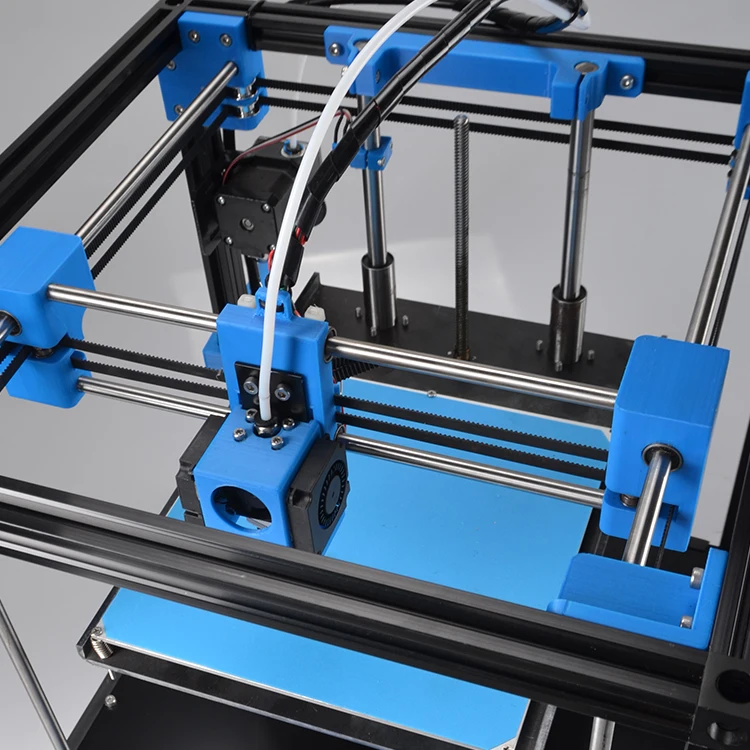 For example, it comes with a dual Z-axis linear rod design for a stable and precise 3D printing experience.
For example, it comes with a dual Z-axis linear rod design for a stable and precise 3D printing experience.
The printer itself comes as a partially assembled kit, and you can start 3D printing with it in less than an hour This makes it an excellent beginner-friendly option. You get a heated bed, a proprietary nozzle that reaches up to 260 °C, and a 32-bit motherboard with silent TMC 2208 stepper drivers. It also has a 3.5-inch touchscreen for easy use and accessibility.
Considering the price point and the features, the Creativity 3D Elf is a great beginner 3D printer that delivers decent print quality. You get all the things you’d need to print basic materials and can be further upgraded with advanced features to meet more high-end needs.
Standout Features
- Dual Z-axis design
- Easy to assemble
- High-temperature hot end
Technical Details | |
|---|---|
| Build volume | 300 x 300 x 350 mm |
| Feeder system | Direct Drive or Bowden |
| Frame | Aluminum and Metal |
Max.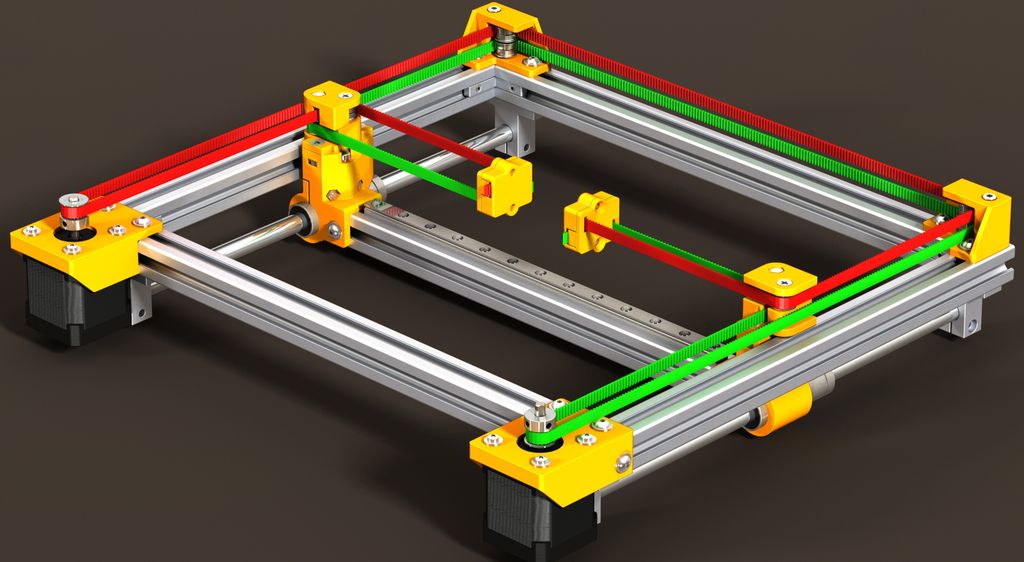 hot end temperature hot end temperature | 260°C |
| Bed leveling | Manual |
| Materials | PLA, ABS, HIPS, Flexible, Soft Rubber, Carbon Fiber, TPU, etc. |
What We Like
- Stable and accurate printing
- Neat cable management
- Beginner-friendly design
Could Be Better
- Open-frame design
Find Creativity 3D Elf at
AmazonAliExpress
E3D ToolChanger
Most versatile
Check Price
E3D
The E3D ToolChanger motion system is one of the most unique and innovative 3D printer designs to date. It lets you use additive and subtractive manufacturing along with laser inspection, all in a single machine. You get to do all of this due to its unique tool-head changing system.
The E3D tool changer supports up to 4 tool heads at a time, which you can configure with various modules. You can choose between different 3D printer hot ends, inspection tools, and a subtractive mill tool with it. Using multiple Hemera extruders, for example, enables you to execute actual multi-material 3D printing without any purge tower and saves a lot of printing filament compared to swapping out filaments in a single extruder.
Using multiple Hemera extruders, for example, enables you to execute actual multi-material 3D printing without any purge tower and saves a lot of printing filament compared to swapping out filaments in a single extruder.
In terms of features, you get a Duet 2 Wi-Fi motherboard, which has plenty of connectivity ports and delivers one of the best 3D printing experiences. In terms of build quality, you get genuine Hiwin linear rails, Gates belts, and a solid metal structure, all of which come pre-assembled out of the box.
Considering its price point and the use of high-end components, it is not for the average 3D printer user. However, if you want a machine that lets you manufacture, finish and inspect all in a single system, the E3D ToolChanger is the most versatile CoreXY solution around.
Standout Features
- Unique quadruple toolhead design
- Duet Wi-Fi controller
- High-temperature heated bed
Technical Details | |
|---|---|
| Build volume | 200 x 300 x 300 mm |
| Feeder system | Direct Drive or Bowden |
| Frame | Aluminum, 3D printed parts |
Max. hot end temperature hot end temperature | 500°C |
| Bed leveling | Manual |
| Materials | PLA, ABS, PVA, HIPS, PETG, Nylon, Wood, PC, Carbon Fiber, etc. |
What We Like
- True multi-material printing
- Can inspect and machine 3D prints
- Robust build quality
Could Be Better
- Complex electronics and operation
- High price
Find E3D ToolChanger at
E3D
What to pay attention to when buying a CoreXY 3D printer
Build volumeDue to their design, the best CoreXY 3D printers can utilize their build volume very efficiently. Typically, these printers have larger build volumes than their Cartesian counterparts to take full advantage of the faster printing speeds. In fact, there is often not much difference between the footprint of a CoreXY 3D printer and its build volume.
The build volume of your ideal CoreXY 3D printer dramatically depends on its application.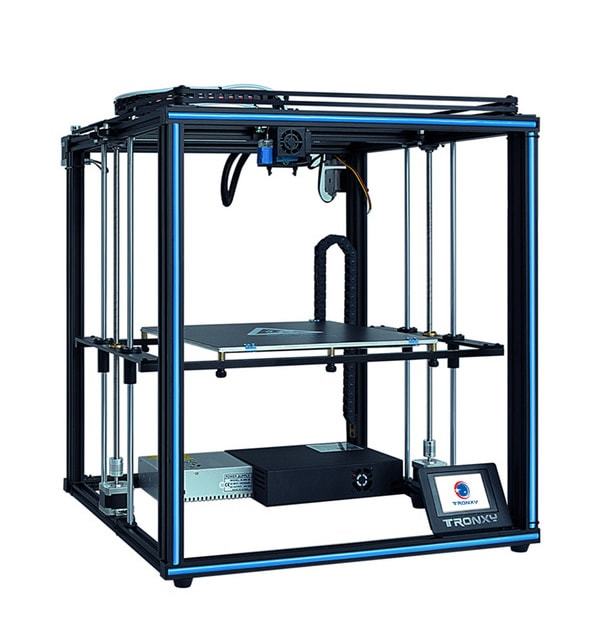 If you’re going to print larger-sized objects, and your main goal is to print faster, 3D printers like the Voron 2.4 and the RatRig V-Core 3 provide considerable print volumes. Whereas, if you need a small and compact 3D printer for accurate yet fast 3D prints, the Voron 0.1 is an excellent option in the range.
If you’re going to print larger-sized objects, and your main goal is to print faster, 3D printers like the Voron 2.4 and the RatRig V-Core 3 provide considerable print volumes. Whereas, if you need a small and compact 3D printer for accurate yet fast 3D prints, the Voron 0.1 is an excellent option in the range.
Usually, though, a build volume of 300 x 300 x 300 mm covers a wide range of prints and gives you a nice balance between build volume and price.
Print speedMany of the best CoreXY 3D printers can quickly achieve printing speeds of up to 150 mm/s, which is already fast, and if you are willing to tune them further, you can promptly get print speeds beyond 250 mm/s, at least. In comparison, a Cartesian 3D printer can print only at about 90-100 mm/s without compromising print quality.
With faster printing speeds you get a quicker turnaround time, save on 3D printing electricity costs due to the lesser duration of prints, and you can re-iterate your designs quicker, leading to a faster production cycle. And the best CoreXY 3D printers let you do all of that without losing print accuracy or print quality.
And the best CoreXY 3D printers let you do all of that without losing print accuracy or print quality.
Print resolution directly translates to the print quality of any 3D printer, and it is often used in sync with the nozzle size and the layer height. Printing at a high layer height with larger nozzles, leads to reduced print resolution and print quality. On the other hand, a smaller nozzle size will let you print at small layer heights, increasing the print’s resolution and quality.
By default, almost all of the CoreXY printers in the list come with a 0.4 mm nozzle size, and it lets you comfortably print at layer heights of 0.12 – 0.28 mm. Usually, though, a small-sized CoreXY 3D printer will give you better-looking and high-resolution prints than a sizable 3D printer due to its small, sturdy, and rigid frame. The smallest of them, the Voron 0.1, can print at a layer of 0.05 mm, giving you the highest print resolution amongst the lot.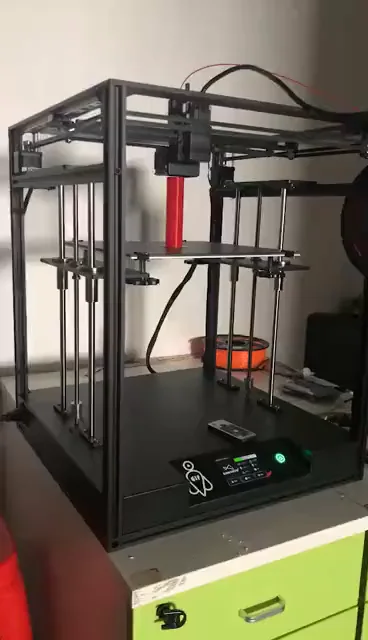
If you prioritize print quality and can get away with a decent build volume, Voron 2.4 and the Creality Ender 6 are the best CoreXY 3D printers that let you easily upgrade the entire hot end, nozzle setup to suit your needs.
Number of extrudersIf you’re planning on executing multi-material 3D prints, having dual extruders (or more) on your 3D printer will help you out immensely. You can choose to do multi-color 3D printing or use water-soluble PVA supports on the secondary extruder to print intricate and complex 3D models.
In the list, only the E3D Tool Changer motion system comes with a multi-extruder setup. You can hook up to four tool heads/extruders and execute actual multi-material 3D printing with it, and it uses separate interchangeable tool heads. You won’t have to waste filament with any purge towers nor lose any building area due to a secondary extruder on the print carriage.
However, the downsides of such a system are its high price, need for technical expertise, and regular maintenance owing to the system’s complexity.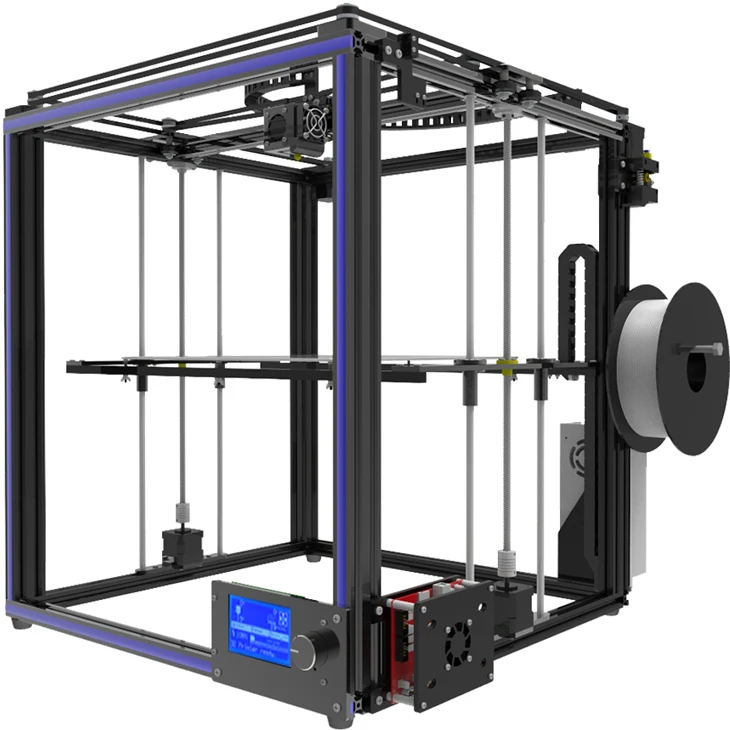 So, you should get a 3D printer with multiple extruders only if you want to carry out multi-material 3D printing regularly.
So, you should get a 3D printer with multiple extruders only if you want to carry out multi-material 3D printing regularly.
The significant advantage of a CoreXY design is that you can easily enclose the 3D printer with panels on all sides. It aids in printing temperature-sensitive materials like ABS, Nylon, and even PETG. While an enclosed design is one factor in material compatibility, having an all-metal hot end and a heated bed is another.
Every CoreXY 3D printer in the list comes with a heated bed and a hot end that can reach up to 260 °C. It lets you quickly print with most common materials like PLA, ABS, PETG, and Nylon. These materials are enough to cover most of your 3D printing needs, even in a professional setting.
Then you have 3D printers like the Voron 2.4, Voron 0.1, E3D ToolChanger, and the RatRig V Core-3, which let you use high-temperature hot ends like the Phaetus Dragon hot end, which is rated to go up to 500 °C. This lets you work with the most advanced 3D printing materials, like PEEK, PEI, PolyPropylene, and PolyCarbonate.
This lets you work with the most advanced 3D printing materials, like PEEK, PEI, PolyPropylene, and PolyCarbonate.
Having a direct drive extruder, as opposed to a Bowden extruder that separates the stepper/drive gear arrangement and hot end, allows you to reliably 3D print with flexible filaments such as TPU.
Kit vs pre-assembledWhen you want to purchase a CoreXY 3D printer, you have two options – get it as a kit or buy one that’s preassembled. The latter one will be a plug-n-play type of solution, while the kit will require you to spend a considerable amount of time fine-tuning the 3D printer’s assembly.
If you choose to go with a CoreXY 3D printer kit, you will have the option to customize certain aspects of your machine while decreasing 3D printer cost compared to a fully assembled printer. The kit will give you detailed knowledge of the inner workings of the 3D printer, which will, later on, help you diagnose and fix issues.
However, you need to have the technical expertise to assemble the kit correctly; otherwise, an improper assembly might give you poor results. A pre-assembled 3D printer is a ready-to-use machine that’s pre-configured and calibrated right out of the factory, and even a novice 3D printer user can get started with it.
A pre-assembled 3D printer is a ready-to-use machine that’s pre-configured and calibrated right out of the factory, and even a novice 3D printer user can get started with it.
FAQ
Is CoreXY better than cartesian?
Some of the best coreXY 3D printers are definitely better than a Cartesian 3D printer in terms of print speeds, material compatibility, enclosed design, and efficient utilization of print space.
Do CoreXY 3D printers provide good quality prints?
Not necessarily. The quality of the prints largely depends on the fine-tuning of the 3D printer’s various components and slicer settings. However, CoreXY 3D printers can deliver good quality prints at faster printing speeds of 150+ mm/s.
Is assembling a CoreXY 3D printer difficult?
The assembly of a CoreXY 3D printer can be complicated for a novice or a beginner in 3D printing. It takes time to assemble the frame structure neatly and adequately tension the belts to get the best results. Still, partially assembled kits are available, like the Creality Ender 6, making it easy for beginners.
What is a CoreXZ printer?
A CoreXZ printer is the next iteration of the CoreXY design. It is a combination of the Cartesian and Delta style of 3D printers. The hot end is connected via two arms that move in X and Z axes, like a Delta 3D printer, and the bed moves laterally in the Y direction. In theory, it is supposed to be fast and lightweight while being accurate and easy to scale for large-sized machines.
Is the Prusa i3 MK3S + a CoreXY?
Nope, the Prusa i3 MK3S + is a cartesian style 3D printer. The X and the Y axes move independently, and the entire frame structure of the 3D printer is very different from a CoreXY machine.
Will Prusa make a CoreXY?
Prusa has recently announced its PrusaXL 3D printer based on the CoreXY mechanism and will start shipping in the Q3 of 2022. It comes with a bigger build volume, has an improved extruder setup, and comes with a tool changer mechanism like the E3D ToolChanger.
Conclusion
A CoreXY 3D printer uses a unique belt and pulley arrangement that ties the X and Y axes together and makes the entire motion system lighter than a cartesian 3D printer.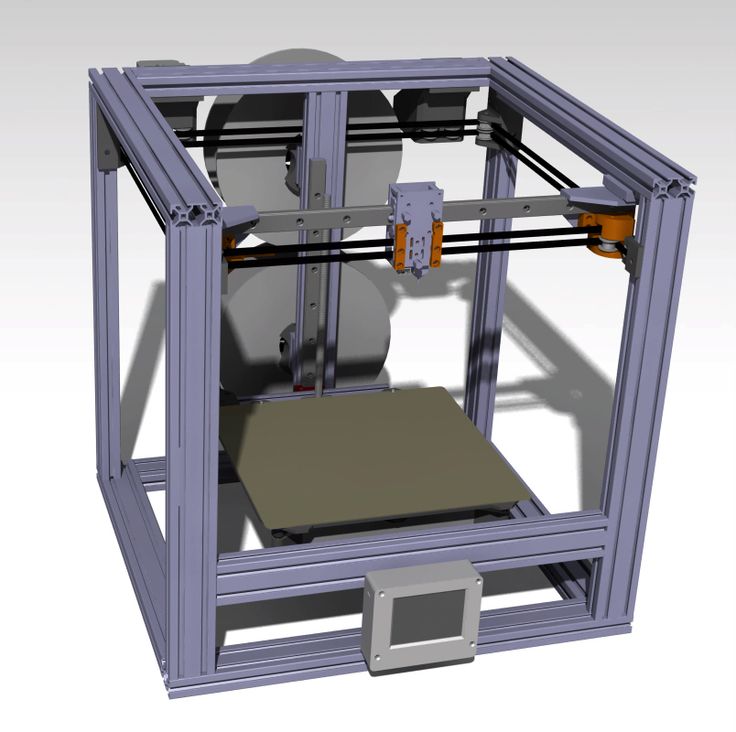 You get faster printing speeds, better accuracy, and improved space utilization with a CoreXY mechanism.
You get faster printing speeds, better accuracy, and improved space utilization with a CoreXY mechanism.
As of now, one of the best CoreXY 3D printers that you can get is the Voron 2.4 kit. It comes in different build volumes, utilizes premium components, has excellent features, is relatively straightforward to assemble, and delivers exceptional print quality at a reasonable price. You’ll also get hands-on, detailed knowledge of the various parts of the Voron 2.4 during its assembly process.
Otherwise, if you want something that comes as an assembled package, the Vivedino Troodon and the Creality Ender 6 are the runner-ups in the best CoreXY 3D printers list. While the Troodon is aimed towards the high-end premium segment, the Ender 6 caters to both prosumers and beginners in 3D printing.
DIY 3D Printer Core XY 310*310 mm
Hi Everyone.
As you know, there are unfortunately no perfect printers in China.
Prush-like drygosts are cheap, but slow at the same time.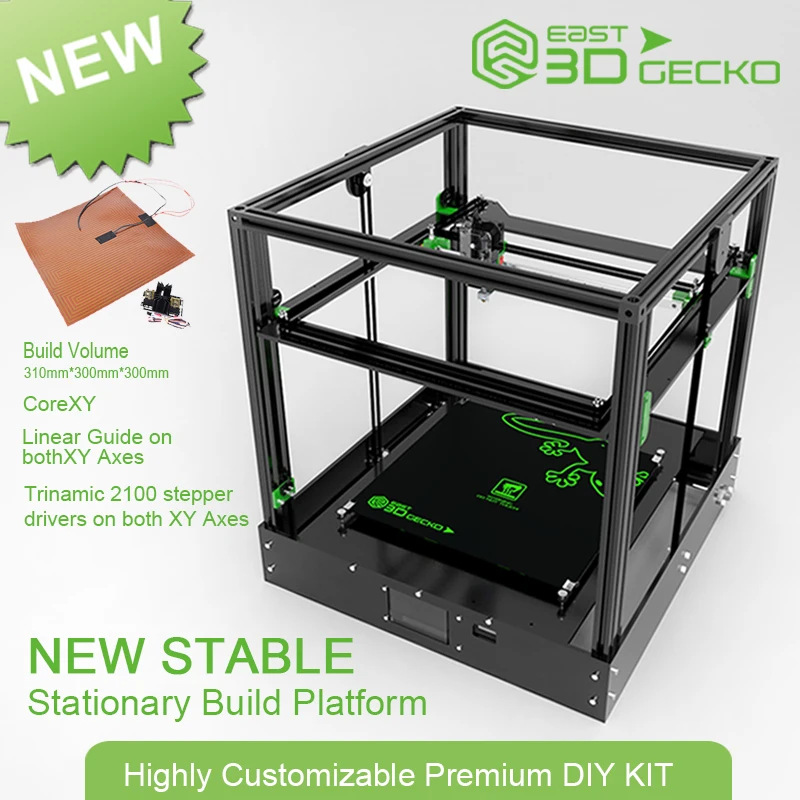
Core XY - more interesting, but low-quality components are also used.
Therefore, I decided to assemble my own printer and immediately say is not for sale.
I just wanted to prove to myself that even a humanist is able to develop and assemble a good enough apparatus. nine0003
And he started his journey with the purchase of quality components:
In the Autodesk Inventor program, he developed his version of the printer completely from scratch.
And then he used the services of a company for cutting machine profiles.
With the help of corners 2040, I fastened the profiles together and, by the way, very reliably and evenly
Next I decided to assemble the table on profiles and corners, but in the end I will abandon this idea in favor of the finished version. nine0003
I installed the sfu1204 ballscrew and the table itself on 12mm linear shafts with flange bearings, while the motor uses two 48x, which will eventually be synchronized with each other.
I abandoned the idea with profiles on the table in favor of the usual corners 2040, they turned out to be more convenient for installing the table and at the same time quite rigid due to the rib
This decision fully justified itself.
The motors along the z axis were mounted on aluminum plates 40mm wide and 8mm thick, and the shafts were fixed with shf clamps
The design turned out to be very successful and RELIABLE.
Moving on to the installation of Kinematics
From aluminum strips 40mm wide and 8mm thick, I cut out holders for motors of the XY axes, as well as holders for carriages and pulleys.
As a result, I had to drill, saw, cut, plan, grind and all this on the BALCONY of the apartment, which is not very good, so in the future I will leave this process in favor of the finished version
After all the manipulations and assembly, I measured the weight of the portal without the hot end, which was 650 grams, which is not much.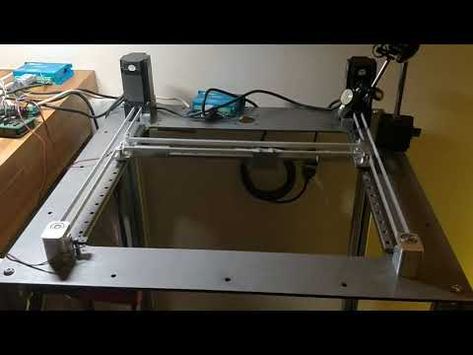
Then proceeded to installation on the frame
On the same corners of 2040, installed Mosquito hotend with airflow
Now it remains to connect the electronics, since I have two motors along the z axis, I decided to connect them Consistently:
I decided to test 8 liter bottle of water
Test passed without any problems
To control printers, I used an SKR1.3 motherboard with TMC2208 drivers and a TFT V2.0 screen, and this system will be powered by two Minvil 15 amp-24v power supplies.
One PSU is used for motherboard, hot end, fans and lighting.
And the second power supply through the mosfet supplies voltage to the heating table 310 * 310 for 24 volts0003
Initially I installed a Bowden system with a BMG feeder, but then I will replace it with a direct
I launched a test bench boat and I liked everything
I tested it with a Battle, with a speed of 120 mm / s, jerky 20, acceleration of 3000 mm / s2
3
I added a little more
I was satisfied with the print quality at different speeds, but at the maximum the airflow with the PLA could not cope anymore
EVEN COMPARED WITH THE ENDER))
On this it would be possible to complete the project, but as it turned out. Many viewers do not have the ability to saw and drill on their balcony, and this assembly option is completely unsuitable for the majority. nine0003
Many viewers do not have the ability to saw and drill on their balcony, and this assembly option is completely unsuitable for the majority. nine0003
I decided to meet my viewers and subscribers of my YouTube channel ChuchaTV and designed Samosbor ALL INCLUSIVE, which does not require the use of improvised materials and special tools.
In other words, a full-fledged Kit Kit, like from China, but with high-quality components.
I prepared a package with a file for laser cutting, bending, painting and engraving and found companies that did all these operations for me. nine0003
Mounting axle carriages and motors made of 4mm steel with subsequent painting
Table and x-axis carriage made of the same metal but 2mm thick Body sheathed with 1 mm sheet with subsequent flexible, painting and engraving
9002 All holes and the cutouts fit just perfect during assembly, I did not regret the money spent on laser cutting.
The table frame turned out to be ideal both in geometry and in strength and rigidity
Direct weight with MGN carriage 12 amounted to 350 grams
Having figured out the mechanics, I decided to install all the panels and corresponding elements
on the sides of two fans of 80mm, since more in size in size. won't get in. On the one hand there is blowing in, and on the other hand blowing out, for ventilation of the block with electronics
won't get in. On the one hand there is blowing in, and on the other hand blowing out, for ventilation of the block with electronics
I put two filament holders inside
From 5mm acrylic, I cut out the door and the lid exactly to size, and on the self-assembly I printed the curtains and the handle itself a small test of print quality and the result was satisfied
The printer turned out to be very nice)) and practical
Project cost $800, although I bought most of the parts on sale days in China.
I am very pleased with the build quality and operation of the printer, but most importantly, I was able to do it without outside help, despite criticism and negativity addressed to me.
Cool 3D printer like CORE XY from office equipment
Creativity
0002 This article is dedicated to those who love to design and create projects with their own hands from available resources.
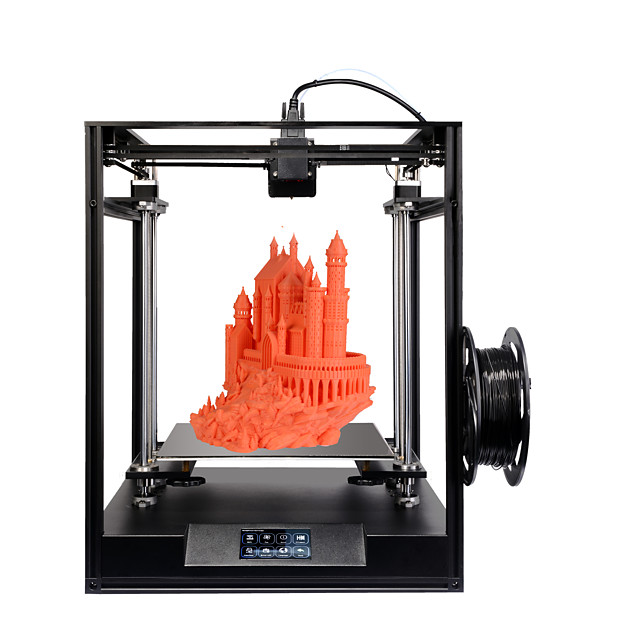 Of course, someone will say that it is easier to buy a finished product, the same article is for enthusiasts.
Of course, someone will say that it is easier to buy a finished product, the same article is for enthusiasts. How to start the process of building a 3D printer?
First, you need the components from which the printer will be built.
Secondly, you need to decide on the choice of model for assembly. In this article, I will talk about the process of building my 3D printer using the CoreXY type.
Absolutely free of charge I got some old office equipment - these are MFPs, printers, power supplies from system units and servers.
What can be used to create a budget 3D printer, about this in more detail:
1. Stepper motors;
2. Ground shafts 8 and 12 mm;
3. Wires;
4. Limit switches;
5. Power supplies;
6. Springs;
7. Hardware;
8. Bearings;
9. Cooling fans.
In order not to spend a huge amount of time developing my own 3D printer and designing models, I used the ready-made work of 3D printers and downloaded ready-made parts for printing, collecting the best, and in my opinion, the most successful work.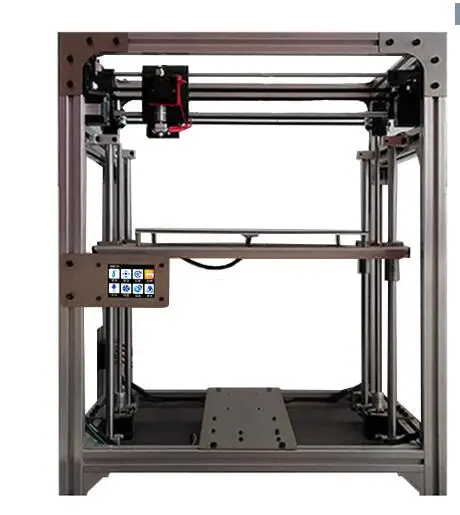 The plastic parts needed to assemble the new 3D printer I made on another 3D printer from ABS plastic with 30% infill. nine0003
The plastic parts needed to assemble the new 3D printer I made on another 3D printer from ABS plastic with 30% infill. nine0003
I made the case for my 3D printer from a 10 mm MDF sheet.
The dimensions of my printer turned out to be 35*37*47 cm (width*depth*height). I also had a piece of plexiglass, from which I made a door for the future printer, its dimensions are 34 * 25 cm. Having prepared the body parts, I marked out and made mounting holes for the screws for future attachments. Then came assembly and fitting. Of course, not everything worked out the first time, the main thing here is an accurate calculation. Having adjusted all the components in their places, we again had to disassemble the case for further painting and protecting the MDF case from external influences. nine0003
It is impossible to find everything for free, so I ordered the missing components on Aliexpress. I ordered the following components from China:
1. arduino mega2560+ramps 1.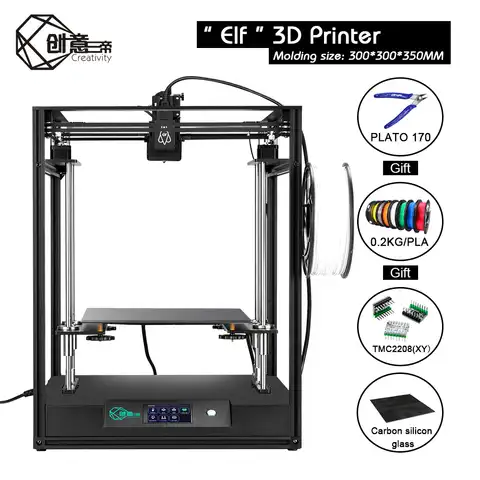 4;
4;
2nd stepper driver DRV8825;
3. table MK2;
4. belt 2GT 6m;
5. pulley set;
6. Teflon tube;
7. extruder drive gear;
8. E3D V6 hot end with thermistor, heater and fan;
9. linear bearings. nine0003
After painting, I started building my 3D printer again. The printer was assembled in the following sequence:
1. I install guides with linear bearings on the side walls, fixing them in plastic parts that are screwed to the body;
2. I assemble the Z-axis, then, together with the table and the engine installed on it, I mount it to the body;
3. At the end I install the central guide shafts. Then I install an already prepared carriage on them; nine0003
4. I carry out the installation of all other electronic components and lay the wires;
5. Illumination of the working area from a 20 cm long LED strip was also installed. To create a 3D printer, I used arduino mega2560 + ramps 1.